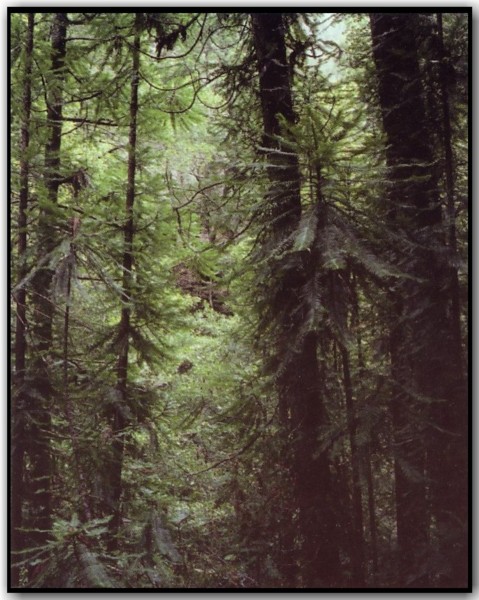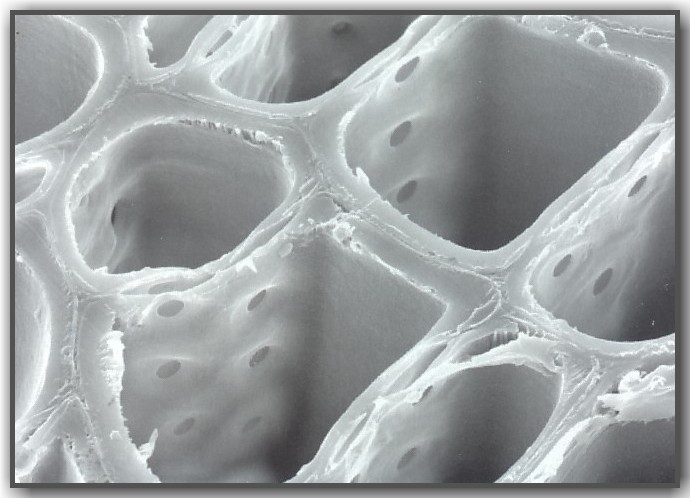In
September 1994 a small population of trees of a previously unknown type
was discovered growing in a secluded gorge in Wollemi National Park,
150 km west of Sydney. Subsequent investigation of its leaf, pollen,cone
and seed morphology indicated it to be a new species in a new genus
within the Araucariaceae family. Its pollen and leaf style was then
matched with fossils from 94 to 2 million years ago and this led to
the conclusion that it once had a widespread geographic range that included
Tasmania, New Zealand, India, Antarctica and southern South America.
The surprise discovery
of fewer than one hundred trees of a type thought to be long extinct,
growing undetected close to the largest city in Australia, attracted
world-wide attention in the media. The genus was named Wollemia
in reference to its occurrence in Wollemi National Park and the species
became nobilis to honour its discoverer David Noble (a NSW Parks
and Wildlife Service ranger who found the tree while bushwalking). Wollemia
nobilis soon became commonly known as the 'Wollemi pine'.

Wollemi
Pine trees, some more than 30 metres in height,
growing on site in Wollemi National Park
Photo
courtesy of Roger Heady
Although a definite
member of the Araucariaceae family, Wollemia nobilis has several
unique features. Mature trees often develop many stems after the original
trunk has died. This is termed 'coppicing' and is very unusual for a
conifer. It also has very distinctive bubbly bark that was described
as being "like coco-pops" by David Noble. Also its leaves
are unusual in having no mechanism for being shed from the tree after
they die. Instead leaves are removed when the tree sheds the entire
branch.
Scientific investigation
of the generic makeup of Wollemia nobilis has produced the surprising
conclusion that there is no genetic variability between the 100 or so
individual adult trees and 200 seedlings that are now known to occur
in three separate sites within the park. This is indicative of a species
that is on the verge of extinction and is probably a result of inbreeding
within a very small population.
Examination of
the tree rings of a fallen tree on site has indicated that the age of
some trees can be greater than 300 years. The occurrence of a 'wind
shear' in the wood of the tree also indicates that very strong winds
occasionally occur within the gorge. Examination of the wood of Wollemia
by scanning electron microscopy has shown that it is similar in its
micro-anatomy to that of the other two Araucariaceae genera, Agathis
and Araucaria.

A
scanning electron microscope image of a very small area of the wood
of Wollemi Pine.
The sample is about 0.08 millimetre in width and shows an end-on view
of
several tube-like tracheids which transport water from the roots
up to the leaves of the tree.
The
small inner apertures are
bordered pits that inter-connect tracheids to one another.
The particular arrangement of these bordered pits indicates that
Wollemia belongs in the Araucariaceae family.
Photo
courtesy of Roger Heady
After at least two million years
in decline, and with so few remaining specimens, the Wollemi Pine trees
growing in the wild are definitely teetering on the verge of extinction.
The NSW National Parks and Wildlife Service and Royal Sydney Botanic
Gardens have devised plans to protect the remaining trees and ensure
long-term species survival. It was realised that the site must not become
a popular tourist attraction and to ensure this the exact location f
the trees within Wollemi National Park remains a closely guarded secret.
Access to the site is limited to the absolute minimum, and those who
are admitted must adhere to strict regulations. Great care is taken
that seedlings are not trampled. Anti-microbial footbaths are used to
ensure plant diseases are not introduced, and in order to reduce soil
compaction, visits to individual trees are minimised. Sites are monitored
to ensure that there are no visits, either by chance or otherwise, by
bushwalkers or plant collectors.
Furthermore, in order to conserve
the species, a plan to propagate trees on a commercial scale has been
devised. It is hoped that by making Wollemi Pine trees widely available
to the public that the risk of illegal and potentially devastating collection
of the species in the wild will be reduced. Commercially grown Wollemi
Pine trees will become available in September 2005. Persons wanting
to be placed on a waiting list to buy a plant should register at
http://www.wollemipine.com.
Experiments at the Royal Sydney Botanic Gardens
have indicated that the juvenile Wollemia grows well in pots,
and can make a nice feature tree for large gardens. It favours acidic
(ph 4.5) soils and is very tolerant of shade.

